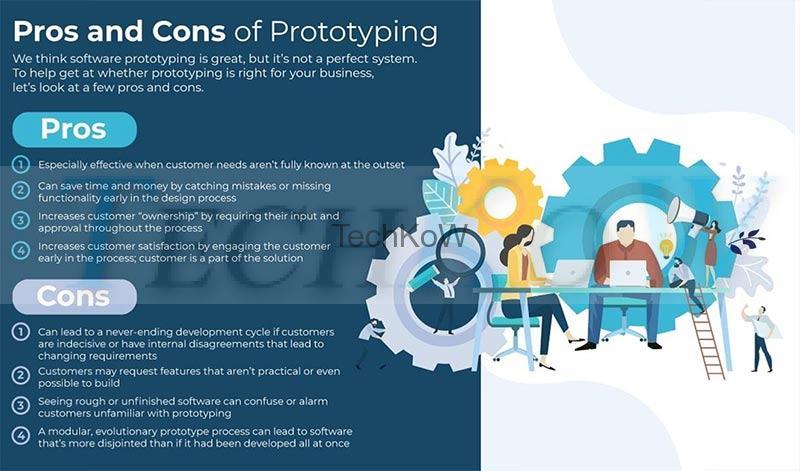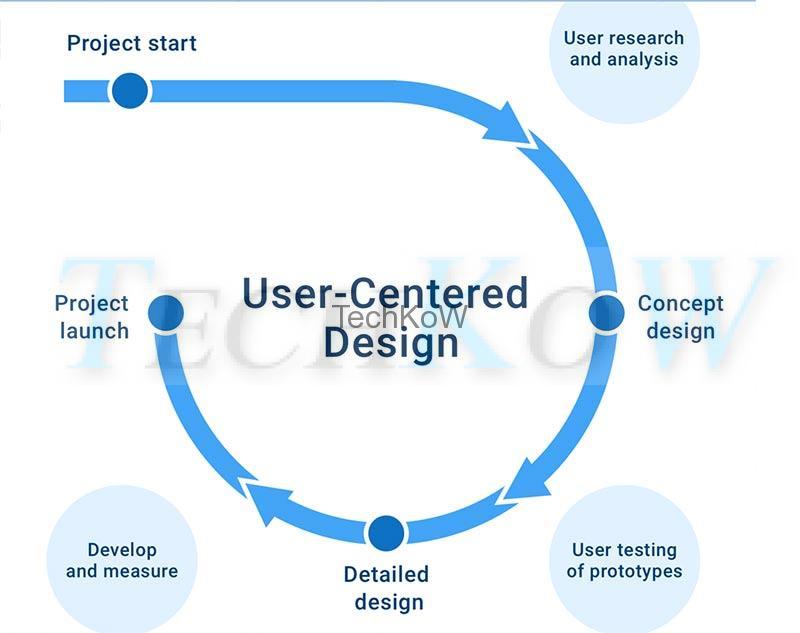When a software development team is tasked to deliver a new program or application, prototyping can be introduced as a method to create a working replica of a product or a system.
They might be incomplete versions of the actual software program that is being developed, and prototypes themselves are somewhat comparable in nature to those produced through mechanical engineering or manufacturing.
For instance, prototypes can inform designers and developers about flaws in the design and gather user feedback for further improvements.
According to a recent study by Good Firms, the average time taken for typical software development is 4.5 months, with $36,000 as the average cost of developing software.
Moreover, Agile has been accredited as the most popular software development method, with C#, JavaScript, and PHP being the most popular programming languages.
Furthermore, today top trends in the software industry are inclined towards AI (artificial intelligence), Blockchain Technology, and the Internet of Things. Around 53.8% of developers still consider client changes and adapting to them as their biggest challenge.
With the information given, here are a few ways through which you can schedule your prototype for a better software development process.
Advantages & Disadvantages

While software prototyping can be considered a great approach that can aid further development and that too in swift succession, no system in the world is perfect. Here are some pros and cons of using the Prototyping Model of software development:
Advantages:
- Customer satisfaction and comfort are enhanced
- Downfalls and missing functionalities can be easily figured out
- Errors can be detected early on that can result in a lot of cost and effort being saved
- Flexibility in design
- New requirements can be quickly adjusted and accommodated
- The developed prototyped can be used for more complicated projects in the future
Disadvantages:
- After looking at the prototype, customers can demand the actual product to be delivered soon
- It can turn out to be costly for the development team with respect to time, effort, and capital intensiveness
- Documentation can suffer due to continuously changing customer requirements
- Sub-optimal solutions become included in the prototype due to developers who are in a hurry
- Too many variations in requirements can be incorporated in the prototype as per customer evaluation
- Uncertainty in determining the number of iterations
Best Practices for Software Prototyping

Over the years, numerous software prototyping best practices have been introduced. These include:
- Mockups can help focus on product functionalities and the intended usage of the end product. Plus, digital mockups show the graphic design, including the look and feel of the application.
- Paper prototypes are practical for digital products as it is cost-effective and reveals many ideas for improvements and usability issues.
- The role-play method can help in capturing and expressing the emotional response of users towards using a product or service.
- The storyboarding technique can be used to reflect and visualize the customer journey and user experience.
- Utilize sketches and diagrams for the early stages of the prototype as it can help illustrate ideas and assist them further to become materialized into the real world.
- Wireframes can help you to jot down structural aspects of the user interface of a digital product. They can also help define the positioning of various interactive elements.
·DSDM
Formally known as Dynamic System Development Method, DSDM is an Agile method that focuses on the full project lifecycle. DSDM is an organized process which emphasizes on delivering business solutions efficiently.
It can be similar to SCRUM and XP in many ways, but its best use is fixed. By using DSDM, one can deliver truly evolutionary prototypes where the prototype itself evolves into the client’s actual system to be delivered. There are four categories of prototypes that DSDM, namely recommends:
- Business Prototypes
- Capability/Design Prototypes
- Performance & Capacity Prototypes
- Usability Prototypes
·Emphasize the User
If you want to avoid cognitive dissonance from the customer or the client end, perhaps it is best to implement prototyping of software by emphasizing the end user. Here you would be required to evaluate the user’s actual needs and the use cases of your project. The end product must provide solutions to the problems provided in the software requirement brief.

If that is not the case, then you should consider asking your clients the right questions and pay attention to detail regarding the desired features and functionalities of the software. This can help you reach exact values and tackle the software’s core concerns and its development process early on.
·Four Basic Types

When it comes to software prototyping, there are four basic types, including:
- Evolutionary – the prototype is developed initially by incrementally refining on the basis of customer feedback till it finally gets accepted. However, rejected or unwanted features from iterations are kept if needed for use in further stages, so developers don’t have to start from scratch.
- Extreme – mainly used for web development and consists of three sequential and independent phases. The first phase focuses on the basic prototype will all existing static pages presented in HTML format. The second phase is where functional screens are made to simulate data processing using a prototype services layer. Finally, the third and the last phase is where all the services are implemented and associated with the final prototype.
- Incremental – the final expected product is broken into different small pieces of the prototypes and then developed individually. Once all individual pieces are fully developed, they are collectively merged into a single final product according to their predefined order.
- Rapid Throwaway – a useful method of exploring ideas and getting customer feedback. In this method, a developed prototype may not necessarily be a part of the ultimate prototype that the client accepts.
Young pupils who opt for cheap essay writing service and who are learning about software development may consider these approaches helpful in the later parts of their professional careers.
·Horizontal – Vertical Prototypes
Developers used these prototypes for application development during the analysis and design. They are useful when it comes to elaboration and visualization of requirements, but both have their own pitfalls.

However, developers who are aware of each of their pitfalls can overcome them during the software development cycle in a way where pros far outweigh cons. It is important to note here that both Horizontal and Vertical prototypes don’t have to be mutually exclusive.
In fact, in the latter stages of software development, many key features of a horizontal prototype can be fleshed out in more detail to reflect the complexity of a vertical prototype. At Master Thesis UK, an amalgamation of the aforementioned techniques is often used to develop software.
·PSDL
PSDL or Prototype System Description Language is used to describe real-time software. This is where prototyping software systems with hard real-time requirements are challenging because timing constraints introduce the implementation and hardware dependencies.
PSDL can be used to address these issues by introducing control abstractions that can include declarative timing constraints.
CAPS (Computer-Aided Prototyping System), which is an associated toolset, can be implemented to use this information to generate code and associated real-time schedules automatically.
It can also be used to monitor timing constraints during prototype execution and simulate execution in proportional real-time that is relative to a set of parameterized hardware models.
·Software & Tools

Popular tools and software that can be used for prototyping software development include:
- Axure
- Adobe Experience Design
- InVision
- Origami Studio
- Sketch
Conclusion
Prototyping is a great method that software engineers and application developers can use to obtain client feedback pertaining to the end product or the system that has to be engineered.
In fact, the Prototyping Model is widely considered one of the most popularly used SDLC (Software Development Life Cycle) models. It allows room to incorporate additional requirements from customers.
Thus, customers are provided with a working model that they can clearly see and observe, which leads to the further refinement of the model, leading to the completion of the project concerning the developers.
I hope this post was able to offer you meaningful insights as to how scheduling your prototype can lead to better software development. Cheers, and all the best for your future endeavors!
Author Bio
Elaine Vanessa currently works at Dissertation Assistance UK as a Research Analyst and Blog Writer. She is quite fond of indulging herself in popculture, including anime, movies, music, and video games. During her free time, she likes to doodle, create wall art, and practice mindful yoga.















